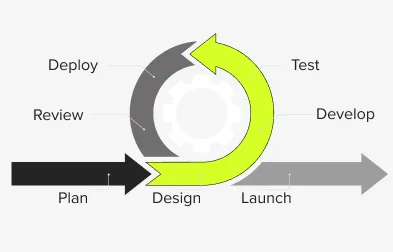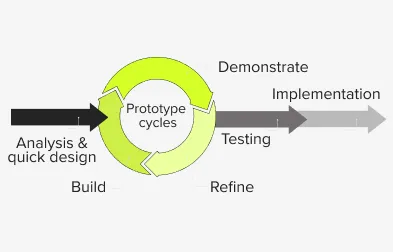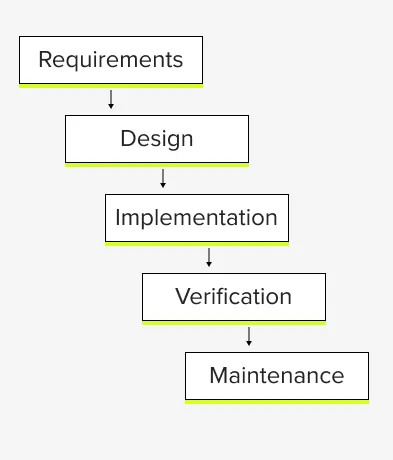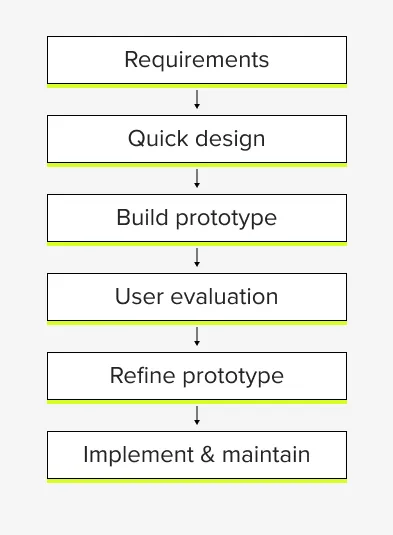

By 10Pearls editorial team
A global team of technologists, strategists, and creatives dedicated to delivering the forefront of innovation. Stay informed with our latest updates and trends in advanced technology, healthcare, fintech, and beyond. Discover insightful perspectives that shape the future of industries worldwide.
Top Software Development Methodologies: A Comparison
This blog compares software development methodologies, including their advantages and disadvantages, to help companies choose the right fit for their project.
Comparing the top software development methodologies
There are always multiple ways to approach a software development project, and each method has its own pros and cons. While some older practices, like waterfall, have fallen out of fashion in recent years, they still see use among smaller companies with less experienced teams. However, newer methodologies like DevOps and DevSecOps are becoming industry standards due to their ability to accelerate release cycles while improving software quality.
Top software development methodologies
| Advantages | Disadvantages | ||||||||||
| Agile |
|
| |||||||||
| |||||||||||
| RAD |
|
| |||||||||
| Waterfall |
|
| |||||||||
| Prototyping |
|
| |||||||||
Agile
The agile methodology involves developing software iteratively, in small chunks of functionality, rather than as one monolithic set of features. Its name comes from the fact that it improves the agility of development teams in response to sudden pivots in direction. Rather than modifying the entire codebase to change capabilities, they can edit individual features. Each iteration can also be independently tested and maintained, improving overall code quality.


Agile also includes the following subcategories that are specific methodologies using the Agile approach:
- Scrum: Software development managed iteratively by the group, with continuous feedback through open communication within the development team. Workflows are managed through a set of principles, values, and practices. Scrum is used most often in highly dynamic environments with rapidly changing requirements that require continuous feedback.
- Kanban: The development team is managed visually on a Kanban board that utilizes visual signals to represent projects. These projects are organized into workflow columns and regulated by work-in-progress limits and delivery points. This allows the team to maximize its efficiency and reduce the time to project completion. Kanban is sometimes combined with Scrum (known as ScrumBan), providing the structure of Scrum while being flexible with flow. It’s suitable for environments with unpredictable workloads, such as operational support teams.
- Extreme programming (XP): This agile methodology emphasizes engineering precision and focuses on the technical aspects of software development. This focus allows smaller teams to remain flexible amid changing requirements while still producing high-quality products rapidly and cost-effectively. It’s particularly used in highly dynamic environments where requirements change rapidly and continuous feedback is essential, like with Scrum.
Rapid application development (RAD)


The RAD software development methodology focuses on quick prototyping and iterative development to deliver a working product as quickly as possible. Rather than relying on extensive upfront planning, RAD collects continuous user feedback on prototypes early in development and uses this to make adjustments as needed. The goal of rapid application development is to minimize investment costs while maximizing quality.
Waterfall


Waterfall is a traditional software development methodology based on a rigid linear model of sequential phases. Development flows down each of these stages in a waterfall fashion, hence the name. Each phase of development must be completed before the next phase can start. This differs from all of the other methodologies on this list, which involve a cyclical model of iterative software development.
Prototyping


This is a newer methodology that involves creating prototypes, or working models, early in the development process. These models can then be iterated on based on user feedback to refine the product and ensure better alignment with user expectations.
10Pearls can help you implement the best software development methodology for your use case
Changing the way your development team operates can be highly disruptive and, in some cases, requires specialized skills that your existing staff might lack. Outsourcing the work to a trusted partner like 10Pearls can significantly reduce implementation headaches while ensuring you have sustainable solutions that meet your specific requirements and seamlessly integrate with your current tech stack. In addition to our technology consulting, implementation, and integration services, we also offer custom software development services using the latest AI-powered tools to deliver exceptional results in less time and at a lower cost.
Reach out for a risk-free consultation to get a custom software development methodologies comparison for your project.



